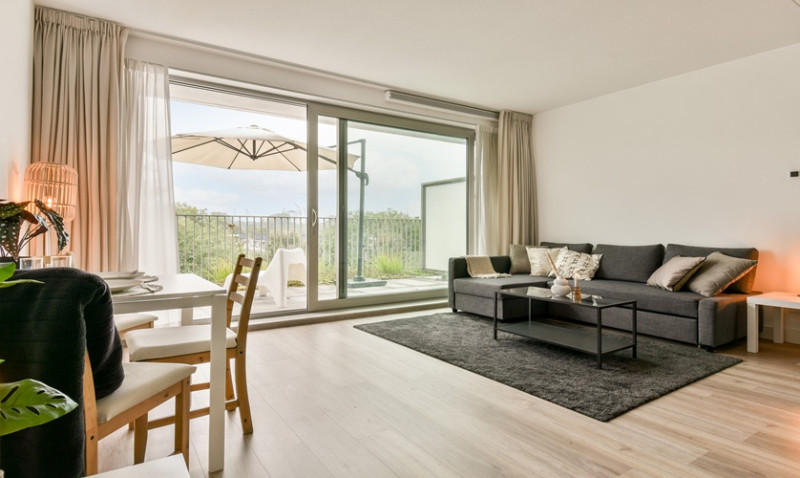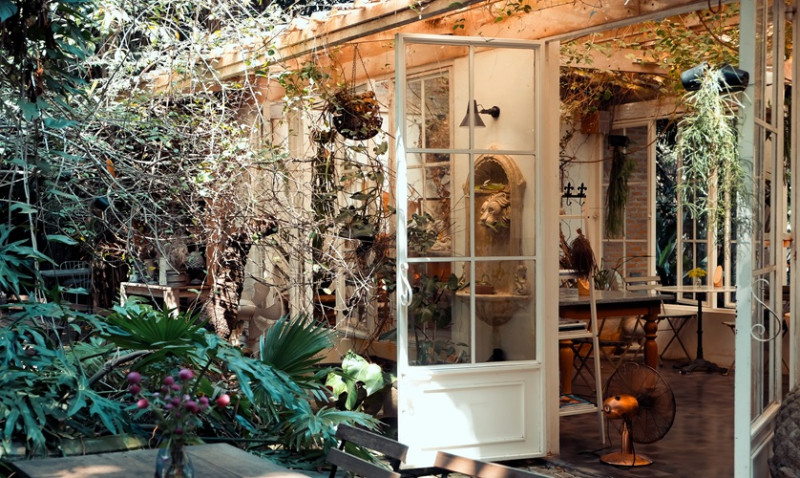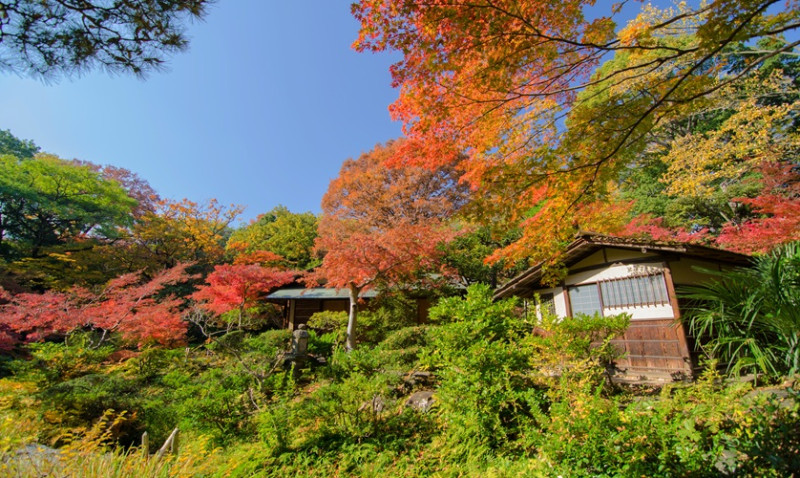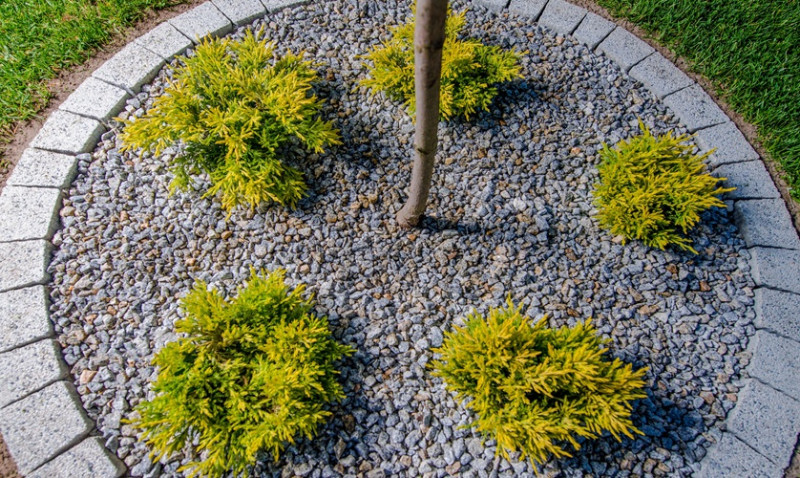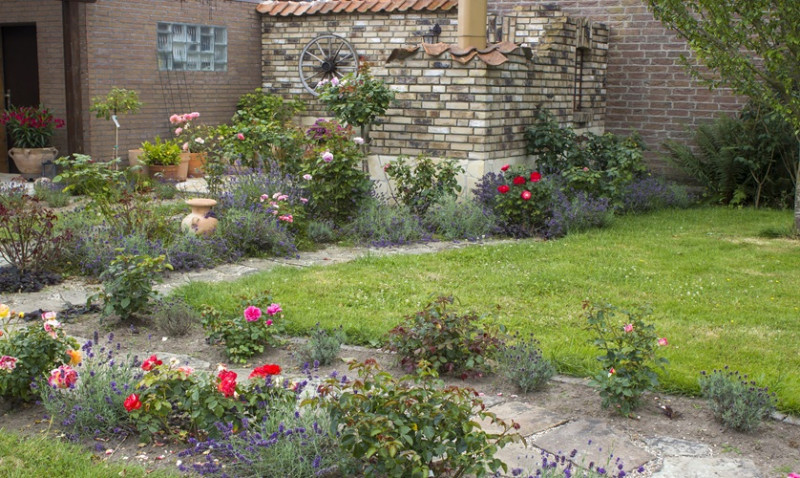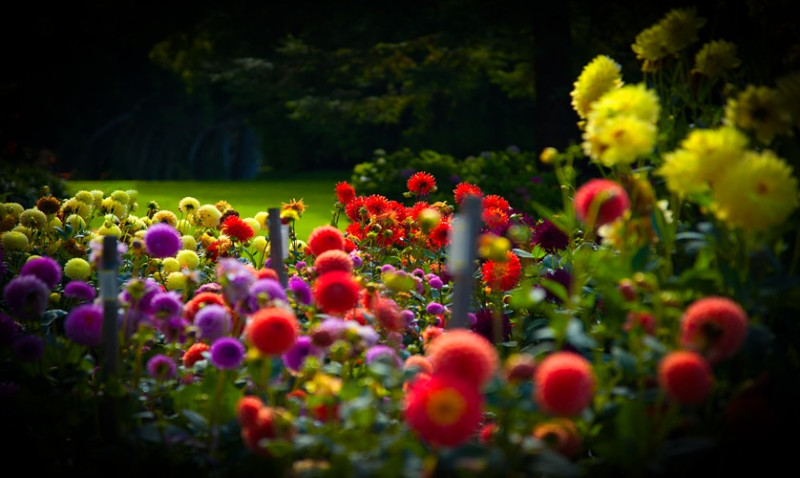
Sloped gardens may look stunning, but they often present a unique set of challenges – from soil erosion to water runoff and difficult access. However, with the right selection of plants, these tricky spaces can be transformed into beautiful, low-maintenance features of your outdoor space. Whether you're a DIY enthusiast sprucing up your garden or a professional architect looking for reliable planting solutions, this guide will help you choose the best plants for slopes, hillsides and banks across the UK.
Below, we walk through ten of the most effective, attractive, and low-maintenance plants that are ideal for stabilising soil, thriving on inclines, and enhancing your landscape’s aesthetic. We've included perennials, shrubs, groundcovers and ornamental grasses — all perfect for varying sun and soil conditions common in British gardens.
1. Vinca minor (Lesser Periwinkle)
Lesser Periwinkle is a ground-hugging evergreen that is perfect for covering slopes. This hardy groundcover thrives in shade and partial sun, making it ideal for north- or east-facing banks. It flowers in spring and sometimes again in autumn, producing delicate blue-purple blooms that add a splash of colour while suppressing weeds.
Its dense weaving habit helps anchor the soil, reducing erosion. It is easy to maintain and spreads steadily but without becoming invasive, which is ideal for those who want a fuss-free solution for their downward gardens.
Additionally, Vinca minor requires minimal watering once established, which suits the often-variable weather conditions we see across the UK.
2. Erigeron karvinskianus (Mexican Fleabane)
This dainty perennial is beloved by designers for its romantic, untamed look — and it’s particularly well suited to sloped gardens. Erigeron karvinskianus spreads readily, spilling down banks and walls with daisy-like flowers that bloom from late spring into autumn.
It thrives in full sun and well-draining soil, making it great for dry, rocky slopes. It's also excellent for pollinators, drawing bees and butterflies throughout the season. This plant self-seeds generously, creating a natural meadow effect over time.
Architects and landscape designers favour this one for its ability to soften hard edges, especially on terraced slopes or dry-stone walls.
3. Geranium ‘Rozanne’ (Cranesbill)
Geranium 'Rozanne' is one of the longest-flowering perennials available, making it a staple for low-maintenance hillside gardening. It produces violet-blue flowers from early summer to the first frost — perfect for injecting months of colour into a bank.
The plant spreads steadily but doesn't choke out others. It prefers full sun to partial shade and well-drained soil; ideal conditions found on garden slopes. It works equally well in borders, meaning you can plant it at the top and let it trail naturally downwards.
Gardeners appreciate Rozanne’s ability to perform with little input. Once planted, it takes care of itself, needing only the occasional tidy-up.
4. Lavandula angustifolia (English Lavender)
A classic in any British garden, English Lavender does especially well on sunny, well-drained banks. It thrives in poor soils and adds sensory appeal with its fragrant blooms and foliage. Slopes help naturally improve the required drainage for lavender – a win-win!
Lavender attracts pollinators, supports biodiversity, and offers year-round structure with its evergreen-grey foliage. The tidy mounds are easy to clip back yearly, and they're less prone to disease when planted on an incline with good air circulation.
Pair lavender on slopes with gravel for a Mediterranean-style landscape that's drought-tolerant and eye-catching.
5. Hedera helix (English Ivy)
If you're after full coverage and erosion control, you can't go wrong with English Ivy. It's an evergreen climber that can also be used as a fast-growing groundcover, binding soil and preventing runoff.
This plant thrives in shade, which makes it perfect for difficult, north-facing slopes. Ivy is also low-maintenance and will persist even with a high footfall nearby, making it great for busy households or commercial properties.
However, it grows vigorously, so it’s best used where it’s contained or maintained regularly. Use with caution near buildings or delicate structures, as it can be aggressive if left unchecked.
6. Carex elata ‘Aurea’ (Bowles’ Golden Sedge)
Ornamental grasses are particularly effective on banks, and Bowles’ Golden Sedge stands out for its vibrant yellow-green foliage. Its moisture-loving nature makes it ideal for lower, damper parts of sloped gardens where water naturally accumulates.
This sedge grows in attractive clumps and provides movement and colour contrast year-round. Its arching form helps slow down rainfall and promote soil absorption. It’s especially useful near drainage ditches or streams running through hilly plots.
Combine with hostas or ferns for a soft, woodland-style slope.
7. Juniperus horizontalis (Creeping Juniper)
Looking for a durable evergreen that hugs the ground? Creeping Juniper is an excellent choice. Its hardy, spreading form makes it ideal for full-sun slopes, and it remains appealing throughout the year with blue-green foliage that turns bronze in winter.
Highly drought-tolerant and low-maintenance once established, Juniper helps stabilise soil and suppress weeds. Its prostrate habit means you can cover large areas quickly and attractively.
Use in more rugged or informal bank plantings where resilience is a top priority. Pairs beautifully with rocks and alpine-style landscaping.
8. Rosa rugosa (Rugosa Rose)
Rugosa Roses are tough, bushy shrubs that are ideal for steep slopes. They’re known for their resistance to pests, wind, and salt — even being used in coastal landscaping. Their dense root systems are excellent for binding loose soils.
The fragrant, cup-shaped flowers bring beauty from May to September, followed by brightly coloured hips that attract birds throughout autumn and winter. These roses require little pruning and tolerate poor soils well.
A great choice if you want structure, wildlife benefits and reliable beauty on a sunny slope.
9. Thymus serpyllum (Creeping Thyme)
Creeping Thyme is a fragrant, mat-forming herb that's perfect for sunny inclines, rockeries, or gravelled banks. It forms a tight carpet of tiny leaves and flowers prolifically during the summer to attract pollinators.
It thrives in lean, well-draining soil and stands up to foot traffic, so it's perfect for sloped paths or retaining wall edges. The bonuses? It’s evergreen, edible and amazing for promoting a sensory landscape.
Try interplanting with small stones or pavers for a natural, low-maintenance slope with excellent drainage.
10. Cotoneaster horizontalis (Wall Cotoneaster)
Commonplace but often underrated, Cotoneaster horizontalis is ideal for stabilising banks. It has a herringbone branching habit that hugs low to the ground and spreads widely — a natural cascade for any incline.
In spring, it produces delicate white flowers, followed by bright red berries in autumn and winter. The seasonal interest is excellent for year-round impact, and the dense growth keeps weeds at bay while anchoring the soil.
Suited to virtually all UK soil types, it’s a popular choice for public spaces and commercial landscaping – but it works just as well in small residential plots.
Final Thoughts: Planning Your Perfect Slope Garden
Successfully planting a slope involves more than visual appeal. Consider drainage, erosion, and root structure when choosing plants. Use deep-rooted species to stabilise loose soil and mix plant types — groundcovers, shrubs, grasses — to create a texturally rich, layered effect that also promotes ecological balance.
Here's a quick summary of our top 10 picks for different conditions:
| Plant Name | Best For | Light Needs | Key Benefit |
|---|---|---|---|
| Vinca minor | Shaded slopes | Partial to full shade | Weed suppression, erosion control |
| Erigeron karvinskianus | Sunny banks | Full sun | Long bloom time, self-seeds |
| Geranium ‘Rozanne’ | Mixed light slopes | Sun to partial shade | Months-long flowering |
| Lavandula angustifolia | Dry, sunny slopes | Full sun | Drought tolerance, fragrance |
| Hedera helix | Shady hillsides | Shade | Fast coverage, low maintenance |
| Carex elata ‘Aurea’ | Damp areas on slope | Sun to partial shade | Bright foliage, thrives in moisture |
| Juniperus horizontalis | Sunny, rocky banks | Full sun | Year-round interest, drought-tolerant |
| Rosa rugosa | Coastal or exposed slopes | Full sun | Wildlife-friendly, erosion control |
| Thymus serpyllum | Dry, sunny inclines | Full sun | Edible, aromatic, pollinators |
| Cotoneaster horizontalis | All-purpose use | Sun to shade | Low-growing, year-round interest |
With smart planning and the right plants, even the steepest slopes can become standout features — functional, stylish, and full of life. Whether you're crafting a modern outdoor retreat or stabilising a property edge, these species will provide the grounding and beauty your landscape needs.
Happy gardening!
